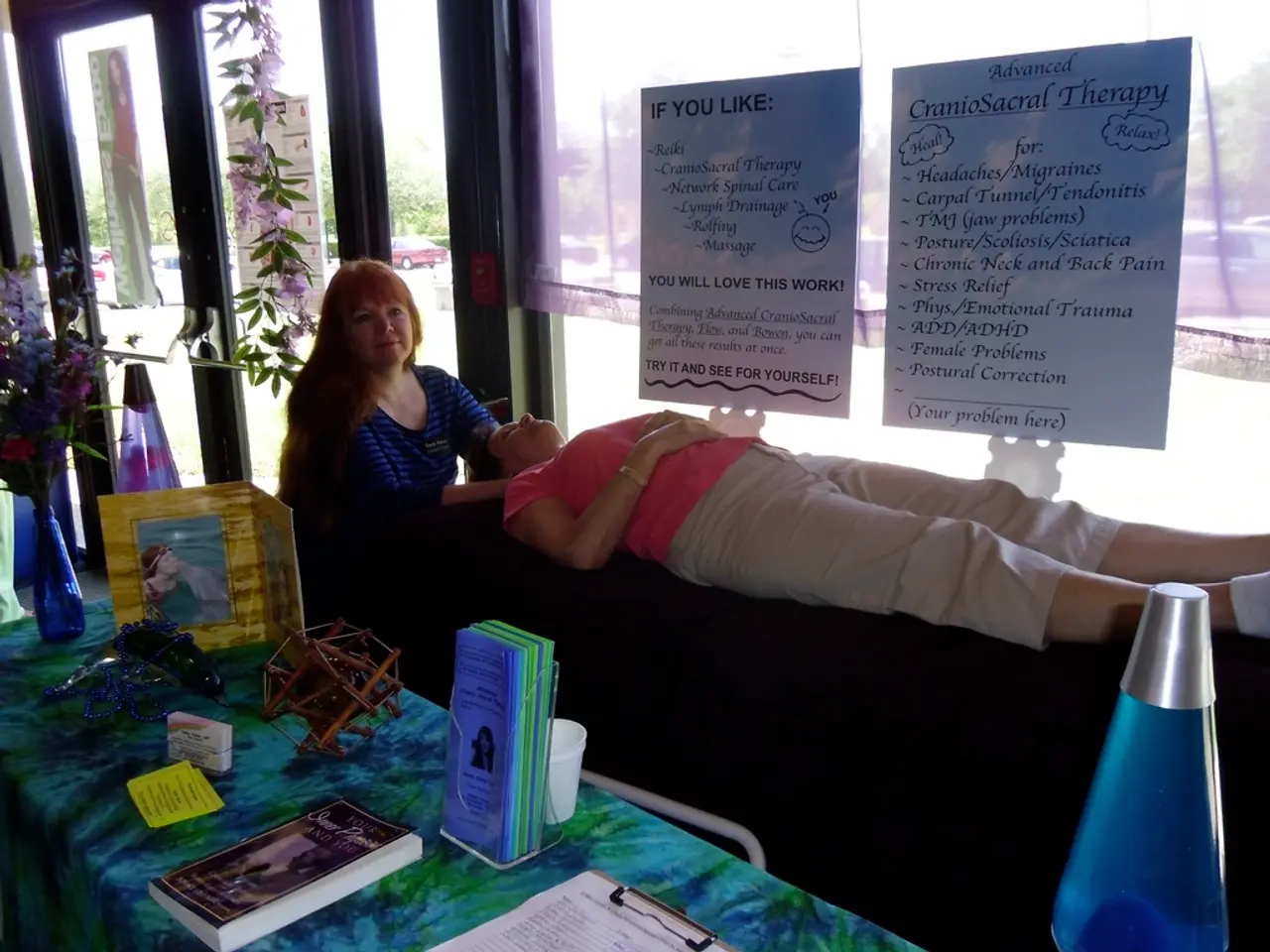Exploring Art Therapy and EMDR: Discovering the Best Fit for Your Needs
Two innovative trauma-focused therapies, Accelerated Resolution Therapy (ART) and Eye Movement Desensitization and Reprocessing (EMDR), are making strides in the mental health field. Both therapies employ unique techniques to help individuals cope with trauma, but they differ significantly in approach and suitability.
Accelerated Resolution Therapy (ART)
ART, a more directive and structured therapy, follows a protocol that combines guided eye movements with visualization and the "rewriting" of traumatic memories. Minimal talking is required, making it suitable for those who struggle to verbalize trauma. The therapy does not necessitate homework and typically concludes in 3-5 sessions.
ART focuses on voluntary image replacement, where individuals visualize and transform their traumatic memories into positive images. The therapy is designed to rapidly reprogram how traumatic memories are stored in the brain, leading to rapid symptom reduction. It is effective for trauma, PTSD, anxiety, phobias, stress, and grief, and avoids revisiting trauma repeatedly.
Eye Movement Desensitization and Reprocessing (EMDR)
EMDR, on the other hand, uses bilateral stimulation (eye movements, taps, or sounds) while clients focus on traumatic memories. The therapy involves an eight-phase process, including history taking, desensitization, and installation of positive beliefs, and encourages client-led processing.
EMDR has been used for over 4 decades and thus has a much more extensive body of research to support its efficacy. It is particularly effective for processing and reducing the emotional intensity of traumatic memories, and is useful for single-event trauma or complex PTSD. The aim is to reprocess trauma to relieve symptoms like flashbacks and nightmares.
EMDR emphasizes cognitive restructuring to help individuals reframe their negative beliefs or thoughts. It can also be used to treat anxiety, depression, panic disorders, and other conditions linked to trauma. Unlike ART, EMDR uses a body scan phase to address physical sensations that might be linked to traumatic memories.
EMDR is made up of 8 phases or stages, including history taking, preparation, assessment, desensitization, installation, body scan, closure, and reevaluation.
Comparing ART and EMDR
Both therapies harness eye movements to facilitate trauma reprocessing but differ in pace, structure, and client engagement style, making them complementary options depending on individual needs and preferences. ART, with its faster approach and minimal verbal processing, is especially useful for clients seeking rapid trauma relief without extensive talking. EMDR, with its more comprehensive protocol that encourages client-led processing, is preferred for clients who are able to work through trauma memories in detail.
ART and EMDR were developed to address traumatic memories and experiences and reduce symptoms of PTSD. While ART may be more suited for those who desire quick symptom relief and minimal verbalization, EMDR offers a more detailed and client-led approach for processing traumatic memories.
[1] National Center for PTSD. (n.d.). Accelerated Resolution Therapy (ART). Retrieved from https://www.ptsd.va.gov/professional/treat/psychotherapy/accelerated-resolution-therapy.asp
[2] Shapiro, F. (2018). Eye Movement Desensitization and Reprocessing (EMDR). Retrieved from https://www.emdr.com/what-is-emdr/
[3] National Institute of Mental Health. (2020). Post-Traumatic Stress Disorder. Retrieved from https://www.nimh.nih.gov/health/topics/post-traumatic-stress-disorder-ptsd/index.shtml
[4] Department of Veterans Affairs. (2021). Accelerated Resolution Therapy (ART). Retrieved from https://www.ptsd.va.gov/understand/treat/other/accelerated_resolution_therapy.asp
[5] International Society for Traumatic Stress Studies. (2021). Eye Movement Desensitization and Reprocessing (EMDR). Retrieved from https://www.istss.org/public-education/what-is-trauma/treatments/eye-movement-desensitization-and-reprocessing-emdr




